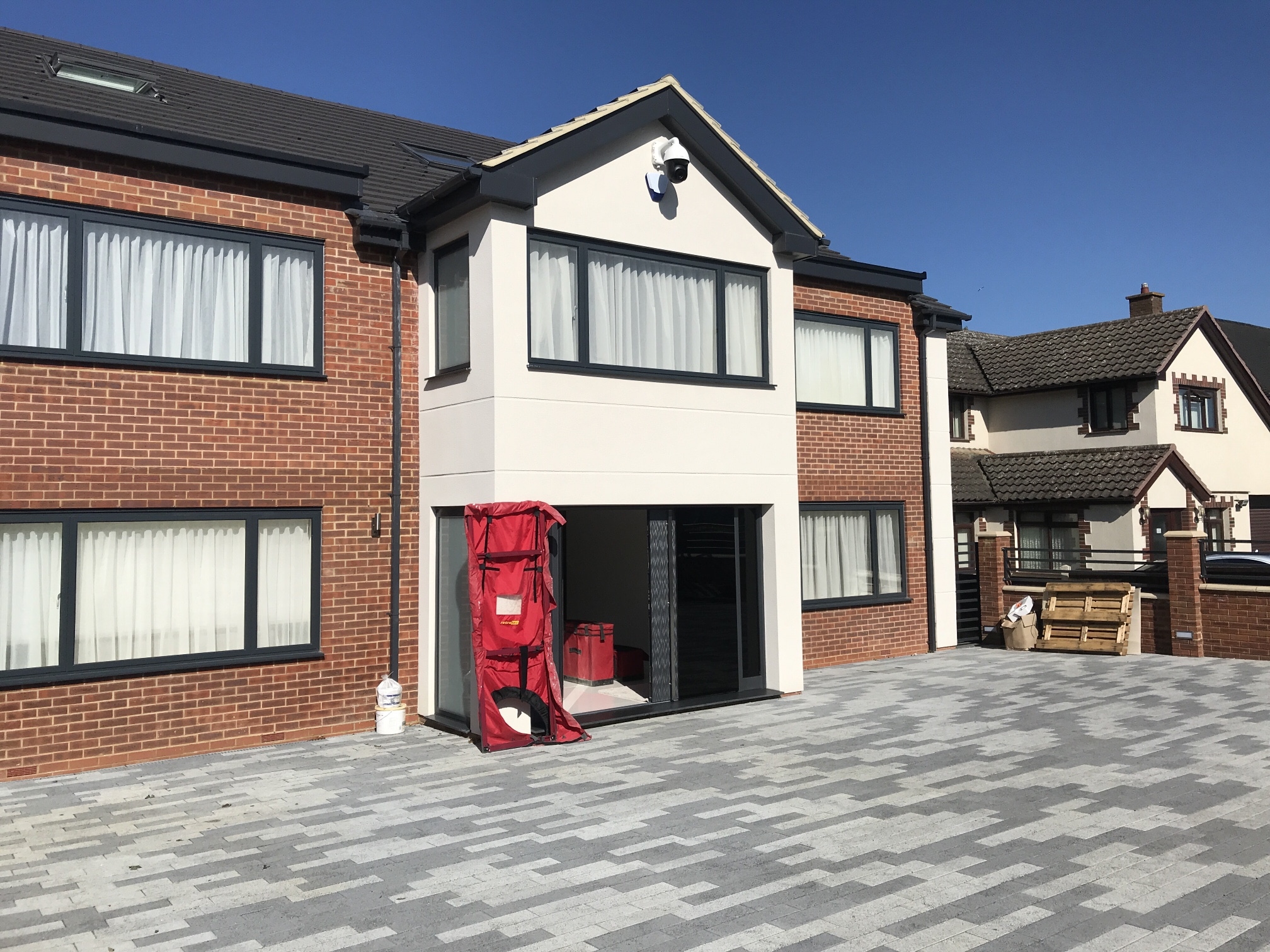[vc_row uxb_theme_class=””][vc_column uxb_theme_class=””][vc_column_text]We are all by now familiar with home convection heating delivered by the radiator. Radiators can be efficient, but they do pull cold air over floors as a prelude to heating it. The concept of underfloor heating (UFH) seeks to improve on this situation by raising the temperature of a room from the floor up. Basically, with UFH, the entire floor surface acts as a single heating element, raising the air temperature above it.
Here, we will explore the benefits of UFH, examining specific issues such as energy and installation costs.
How does Under Floor Heating work?
UFH circulates heated water through loops of plastic pipes fitted beneath the floor. In the process of ensuring that the floor is warmer than any other part of the room and allowing the air to cool as it ascends, heat is provided at the most beneficial point. As a consequence, much less heat is lost through roofs — an environmental bonus.
UFH impacts on home design directly. Because pipework is hidden, designers and architects have greater scope to incorporate customer favoured design elements. A good example would be floor to ceiling windows, ideal for flooding internal spaces with natural light.
The healthy home
Also, convection heating is arguably less healthy—at least 12% of the United Kingdom population is thought to suffer from respiratory conditions like asthma. The reason is simple. Convection heating encourages the agitation of airborne dust. UFH is based on radiant rather than converted heat, and therefore, atmospheric agitation is reduced by comparison.
A second health issue concerns the ability to keep convection systems clean. Convection heaters provide a haven for dust and germs, rendering them hard to keep clean. It would help if you got under and behind them to do a thorough cleaning job. And if dirt and germs are not removed, there’s a chance they will be breathed in by occupants.
Governmental Influence
The UK government is set upon eliminating central heating systems powered by gas in new builds by 2025, as part of what is being called the Future Homes Standard. The straightforward substitution of electrically powered heating as gas is phased out isn’t an attractive answer — they are too expensive to run. A home run on electricity alone will have a high energy bill, almost four times more costly than the gas equivalent.
Furthermore, electricity is comparatively inexpensive, with some systems outputting less than is fed in. On the other hand, an air-source heat pump, especially when coupled with UFH, can produce 4kWh of energy for each 1 kWh of input.
Measuring heat pump efficiency
To measure any heat pump’s efficiency, you will need to calculate its Coefficient of Performance (CoP). This technical calculation indicates how efficiently ground or air source heat pumps may heat dwellings in optimal conditions. By this calculation, an air source heat pump’s efficiency may reach four, with ground sources heat pumps pushing that to five.
In practice, heat pumps can output four or five heat units for every single unit of electricity input. By way of comparison, electric heaters register about 100% efficiency (one unit of electricity makes one unit of heat). The efficiency of modern oil or gas boilers doesn’t get much above 90%.
Why choose UFH over radiator-based systems?
UFH works more effectively when used in conjunction with renewable energy sources than with radiators.
- Heat pumps extract heat from outside ambient air to warm properties. There is always enough external heat at the coldest times of the year that can be converted to energy. In the UK, at least, heat pump technology and UFH make great partners.
- UFH utilises more surface area. This allows such systems to run at 45 degrees instead of 80 degrees C, significantly reducing energy demand.
- Combined, the system can run cheaper by between 15 and 40 %.
Safety
Hospital statistics indicate that burn injuries within the home most commonly occur from physical contact with radiators. Annually, more than 3,750 under-5s are treated for burns in UK hospitals. These alarming figures put radiator burns in the same league as hot liquids, hair straighteners, and clothes irons for burn injuries in young and old. UFH has the advantage of being hidden within the house’s infrastructure, eliminating the possibility of contact burns.
Flooring
Many of us choose tiles or stone over carpet for flooring. But tile and stone can get cold. And because radiators heat only upwards, floors will stay cold. In autumn and winter in the UK, this can prove uncomfortable. UFH has excellent advantages here since the entire floor, in effect, becomes one giant radiator; the floor stays warm, whatever the finish.
Scientific Research was carried out by a combined team from The Carpet Foundation and the Underfloor Heating Manufacturers Association. Five types of carpet and two kinds of underlays were tested. Results showed no detrimental effects from any carpet and underlay combinations. They found that combined thermal resistance under 2.5 togs allows underfloor systems to operate effectively in more technical language.
The right materials
For maximum efficiency, the most appropriate materials must be selected for the construction of pipework. The material of choice for professionals is polyethylene (PE-RT (polyethylene raised temperature), if possible. The use of non-PE-RT material, such as in a standard quality plastic pipe, would not meet the required level of oxygen permeability (See below). PE-RT benefits include:
- Strong
- Highly flexible
- Non-corrosive
- Frost and creep resistant
- High impact strength, a capacity that allows the distorted pipe to revert to its starting shape quickly.
- Constructed from a substance that prevents oxygen diffusion.
- Environmentally friendly.
The importance of oxygen diffusion to UFH
The large amount of pipework involved in UFH projects means it is critical that oxygen cannot significantly permeate the pipe since oxygen ingress may damage and increase maintenance costs.
Using pipes not harmful to the environment is given in today’s climate. PEX pipework contains toxins that are difficult to dispose of. By contrast, the PE-RT pipe is environmentally safe and easily recycled.
Control
Because UFH differs markedly in operation from other forms of heating, it is essential to understand its control. Accurate control is critical for efficient working. For example, since UFH systems take longer to heat up or cool down than radiators, this needs must be considered when designing a programming system. A 7-day programmable thermostat is needed to optimise your system. Besides, most recent upgrade options include the capacity to control such systems from a smartphone or tablet.
Choosing the right system
Consumers have several choices when it comes to UFH. All are capable of installation during the construction of the house itself. Most often, pipework is built into the floor during construction. But there are other build-up choices available too.
- Joisted
- Structural
- Floating
- Low profile
- Bespoke
Professional design and robust installation are critical. UFH systems must also be carefully, perhaps even meticulously balanced for optimal performance. On top of this, occupants need to be shown how to optimise their UFH systems—chances are it’ll prove quite different from what homeowners have been used to.
Different settings may be needed. You may be required to turn the system earlier than you are used to and run it for longer, although it will use less power.
These considerations point to the engagement of a specialist UFH contractor, an expert skilled in all aspects of project engineering from design and value engineering through installation, balancing, testing, and the generation of homeowner’s guides.[/vc_column_text][vc_column_text]
Chris Nicholls
Commercial Director
[/vc_column_text][/vc_column][/vc_row]




